
Comments are available here.

The Fungi kingdom has a lousy public relations department. When many people think of fungi, they think of the moldy pizza in the fridge. However, fungi plays a big role in our lives and history. Much of mythology can be loosely traced back to fungi, like the Salem Witch Trials and other folklore. Today, I am going to talk about fungi’s influence on Magic.
Fungi Inspired Creature Types and Folklore

The Vikings were a feared Germanic people in the 8th to 11th century. They were known for their ferociousness. Before battle, Vikings would dance and perform religious rituals in the woods while eating Amanita muscaria. The mushrooms contain potent hallucinogens, ibotenic acid and muscimol. These chemicals affect the amygdala in the brain, which is responsible for emotions. Specifically, they inhibit the fear response which is probably a potent ability to have in battle. These Vikings were known as berserkers. One of the side-effects is macropsia, or perceiving objects as enlarged. Did you really think somebody made up that whole Mario and mushroom thing? Coincidently enough, the mushroom resembles an Amanita species. Going out on a limb, the psychoactive properties may have well lent to the folklore of giants. Seeing your enemy as a giant probably only added to the Vikings aggression as they viciously attacked the monsters before them.
Death and the Faeries
The reason you should never, ever eat anything resembling an Amanita (or any other mushroom not identified by an expert) is because many, many of the species in the genus are deadly poisonous. These fungi contain a group of compounds called amatoxins. The compounds are potent inhibitors of RNA polymerase. They completely shut down protein production and primarily targets the liver. Essentially, it destroys the liver and kills the person unless an organ transplant is possible. Many of these mushrooms were used to dispatch royalty back in the day and gave rise to the royal taste-tester. As you can see in the artist's rendering of Final-Sting Faerie, our faerie sits on top of a mushroom resembling an Amanita. A characteristic of the Amanita is the mushroom initially develops inside an ovum resembling an egg. As the mushroom grows and expands, it breaks through the ovum and pieces of it clings to the mushroom. This is what composes those hallmark white spots of the mushroom.
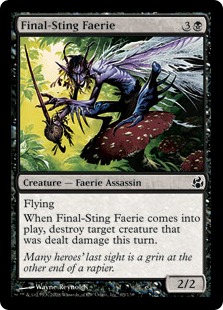
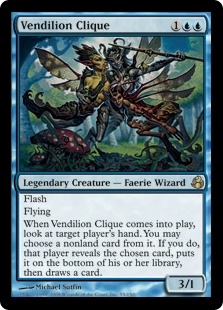
Can you spot the artists’ rendering of Amanita in these pictures?
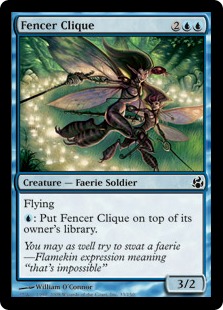
As we know, Lorwyn was inspired by Welsh folklore. Faeries were quite closely connected to the fruiting bodies of fungus known as mushrooms. As we can see in background of this art, we have a faerie ring, where faeries lived or played in folklore. Rings are formed as the fungus expands in search of more food and the food inside the circle is depleted. If you have ever got “ring worm”, this is why it forms a ring on your skin. Once the fungus eats the keratin in dead layer of your skin, it expands outward. The fungus in the ground is no different, and we see evidence of this when its fruiting bodies known as mushrooms pop out of the ground. If you revisit the same spot year after year, you should see the circle expand every consecutive year. Certainly, the fungus may return if the resources are replenished in that area. A ring worm infection may spread back to the center as the skin regrows and food/keratin becomes available again.
Vampires, Werewolves and Witches...Oh My
There are some things in science that are simply conjecture. We may have some evidence, but we can’t prove it. For example, it is postulated there were no fungi in the day of dinosaurs that were capable of digesting cellulose. If fungi were able to, they would have digested all the cellulose of prehistoric plants and therefore no plant material would have ever developed into coal. It makes sense and is plausible, but we can’t prove it. It has also been postulated that many of the myths such as werewolves and vampires were the result of ergot poisoning. Ergotism is caused by the fungus Claviceps purpurea by the infection of rye or other grasses. Humans eat those grains and get ergot poisoning. Ergot and its derivatives can cause vomiting, diarrhea, gangrene in serious cases, and yes, hallucinations. This isn’t just a Dark Ages phenomenon. An outbreak occurred in a small town in France as recent as 1951. A book was even written about it called The Day of St. Anthony’s Fire. Many citizens experienced the sensation of burning limbs and some even thought that they could fly.
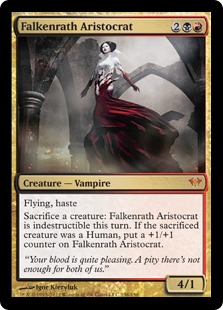
The chemical responsible for these hallucinations was lysergic acid, or better known as LSD. The chemical LSD was actually created by isolating it from rye infected by Claviceps purpurea. It has been speculated that ergotism was the initial cause of the Salem Witch Trials in colonial Massachusetts. The weather patterns were right. Symptoms were typical of ergot poisoning; for instance, psychological descriptions of crawling skin are characteristic of LSD. Purely conjecture, but all of the dots appear to connect. Many historians believe the trials were purely motivated by politics, jealousy and well, human nature. However, people can have more than one disease or psychological problem at a time. I believe it could be a combination of theories: simply add LSD, jealousy, and those motivated by politics/religion to turn an innocent town into a witch hunt.

Doomed Travelers
Faeries aren’t the only magical creatures linked to fungi. Many hypotheses surround the myth about will-o’-the-wisps, the evil spirits that mislead wary travelers off the safety of the path. A once popular notion was methane production and others claimed it was the chemistry of phosphorus. Others point to the luminescent properties of various mushrooms such as the Omphalotus olearius, or known commonly as the Jack-O-Lantern. Many other fungi also produce luminescence and some are quite common in such areas. The Jack-O-Lantern grows on rotting stumps and produces an eerie green glow that emanates from their gills. Ooooooo... spooky. It is by far the simplest explanation. Omphalotus olearius can grow in swamps and glow. Other theories are possible, but a little bit of a stretch. Whatever you do, don’t eat them. They actually smell quite pleasant. They won’t kill you, but you will wish you were dead with some of the worst gastric issues imaginable.
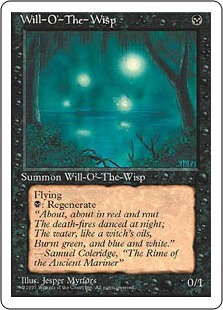
Fungi and Science
Kitchen Table Magic
Fungi are more than hallucinogens and rotting food. Humans have been using fungi for ages. The most notable example is yeast in the baking of breads and the creation of alcoholic beverages such as beer. If it wasn’t for fungi, no morning bagel or doughnut would exist to go with your morning coffee. The usage of yeast is actually a misnomer. Yeast is actually a morphological term referring to a single celled fungus. Many fungi exist as single cells or have a stage in their life cycle where they can convert into a single cell stage. The actual fungus utilized is Saccharomyces cerevisiae that is commonly referred to as brewers’ or bakers’ yeast. The scientific name actually translates into “the sugar fungus of the beer”. Not only is it one of the most commonly used fungi, it is one of the most well-studied in the scientific community and has had its entire genome decoded.
Treefolk and Saprolings, the Best of Friends
For the longest time, I didn’t realize as a player that Saprolings were carnivorous fungus. I thought they were simply plant based. It makes me wonder if Verdeloth the Ancient was mere coincidence. A category of fungi called mycorrhizae have symbiotic relationship with the roots of plants. Some actually penetrate directly into the cells of the root. Fungi can’t actually produce their own food, and in this case they consume sugars from the plant. In exchange, the fungi pull in nutrients and water from the soil to give to the plant. Fungi are actually very good at this, while plants aren't as proficient. It has been shown that these plants fail to thrive without their fungal partner. The far majority of plants share this association, with the proportion as estimated above 90% percent. We know fungi to be very specific and mycorrhizal fungi appears to be no different. Some studies have shown some plants can’t thrive in certain environments simply because their normal symbiotic partner is nowhere to be found in the soil. Therefore, next time you eat a fruit or vegetable, thank a fungus. Again, was this association of Saprolings (fungi) with Ttreefolk intentional or a coincidence?
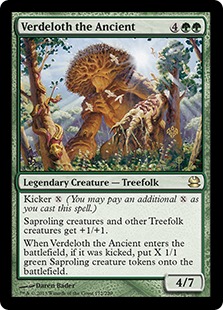
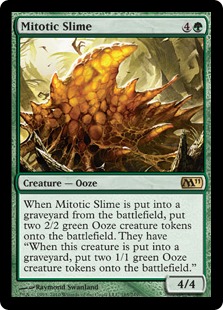
Oh look, Wizards is getting all sciencey with mitotic. They are so cute when they try. I wish I could say Oozes were inspired by slime molds, although mitotic slime would indicate this to be true to some extent. Slime molds are actually a group of organisms that were once all tossed into one group under the Fungi kingdom. If the organism was slimy, it was dumped into the slime mold classification. As more has been learned, we've learned that the slime molds aren’t fungi at all. Many are actually a group of protozoa/amoeba working together. These slime molds can actually live as single celled organism until a trigger initiates them to come together and act in concert. Other types will actually fuse together to form a single cell. Like I said, the classification scheme is a mess. If you took a mycology (fungi) class, slime molds would still be covered. For one, they were originally studied by mycologists because, well, we thought they were fungi. Two, if mycologist don’t cover the topic, nobody will. This reminds me, I have a bone to pick with Aquamoeba and Chronozoa. I guess even Magic classification schemes get messy.
More than Just Mold
Research
When fungi were first discovered, they were considered degenerate plants. Thusly, fungi were often ignored. The study of mycology (myco=fungus) can be rather difficult. We can’t see fungi as easily as observing animals or plants. Monkeys can be seen, heard and seen, but the fungi kingdom can be hard to culture or grow in order to see the complete life cycle. One favorite fungus, the Morchella, is a prized mushroom to hunt for in spring in certain parts of the states. The Morchella can be cultured, but it has been almost impossible to fruit, to the disappointment of agriculturalist. Things are changing. Advances in molecular technology and research is bringing the Fungi kingdom into new light. A hot topic is the biodegradation of plastics. Plastic is choking our landfills and doesn’t break down in nature. However, a fungi called Phanerochaete chrysosporium has been discovered that is capable of degrading plastics. If future research pans out, landfills could be laced with fungi to degrade our growing piles of waste.

I bet I can go to any FNM and find something fungus-related. If you have ever worn stone-washed jeans, thank Trichoderma for producing them by digesting the fibers in a big vat. And you thought they were beaten by stones; you're so silly. Drink soda? The citric acid in your drink was created by Aspergillus. Antibiotics, soy sauce, blue cheese, truffles, anti-rejection drugs for organ transplants, anti-clotting drugs, processed chocolate, bread and beer are all possible thanks to fungi. Why the vomit of fun facts? Well, I want to emphasize at the end that fungi play a very important roles in our lives besides psychedelics and mushrooms on our pizza.
I hope you enjoyed this topical blend of an article and maybe even learned something in the process. If you would like to learn more about fungi, please visit the fun pages of Dr. Tom Volk at www.tomvolkfungi.net. All of this information and more can be found at this trusted site. For history buffs, check out George Hudler’s book Magical Molds, Mischievous Molds.
Thanks for reading,
Meyou
-
View User Profile
-
Send Message
Posted Feb 1, 2014